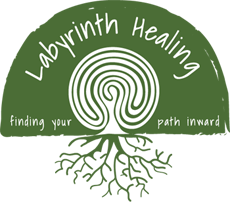Dark places
Posted by on in Blog | 0 comments
We all have dark places.
Whether it’s the pull of an addiction that wants feeding, a mind that endlessly frets and worries, or the chasm of a deep depression, we each have places we’ve journeyed to in this life that we never wish to see again.
Yet, life has a way sometimes of leading us by the hand and taking us back to these places at unexpected times. Anything could spur it, putting those places on the map again: the stress of unemployment, the strain of an unhappy marriage or a bad break up, a meandering life that feels empty or has scarce purpose.
When we find ourselves back in that familiar terrain, that dark place, it’s hard not to feel badly about it. We might feel shame that we’ve resorted to old and painful methods of coping, or hopeless that the darkness has found us again.
So, here’s a little something to think about if you feel like you’ve gone to the dark place and now you can’t possibly come back. We will talk about the anatomy of these places, what they look like, how they sound or feel. And we’ll talk about getting back to good, and what can be learned on the journey home.
In the dark place
Every dark place has a signature, and part of your process is learning what yours looks like.
When I talk about this dark place, this bleak or worried state of mind, or the shameful feelings that emerge after a “slip”—I think of being in a dark forest. Something different may come to mind for you—a feeling in the pit of your stomach, a memory of a span of time in your life that you care not to think about, or perhaps it’s a substance: a type of alcohol or food. It may be a critical voice in your head with a very powerful megaphone that loves to offer harsh commentary on all your comings and goings.
I think a lot in pictures, so that’s what comes to mind for me. Just take some time and see if you can locate it in your body, your mind’s eye, or your memory.
Getting your bearings
While there’s much to be learned about how we ended up where we are, the more immediate task is how to get home.
The first part of getting home is knowing when you’re not there anymore. Do a quick check of your emotional vitals. Are things as they should be? Is life, though stressful at times, generally manageable? Or is there a sense of dread, hopelessness, or a relentlessness to things?
One of the things that surprises us the most is just how gradual a downward spiral can be. Things can build for weeks or months, in a slow and steady way, making it hard for us to protest or put on the breaks. So, sometimes we have to look quite carefully to see that gradual gradient downwards. Other times, there’s been a massive upheaval, and it’s not hard to spot at all.
Getting home
Once you know you’re in a bad place, and you’ve accepted this fact, you can start to find your way back.
Here’s where you ask for help.
This is when you try new things or,
this is where you adopt old, reliable, healthy practices that have helped you come back before.
Your method of recovery will mirror some of your best strengths, whether it’s an upward-lookingness, seeking hope in the moon at the treetops, or applying a sharp, logical mind to the task of backtracking your way out of the woods.
Strengths, remember those? Recruit them. You still have them, even in the dark place. I don’t care if you simply stand in the middle of the forest and shriek until someone hears you—it doesn’t have to be elegant, it doesn’t have to be profound or poignant. You just have to do it.
No matter your method, pull your motivation for change from a place of compassion. If you’re too busy beating yourself up for ending up in the dark place, it will take much longer to marshal the resources you need to leave.
Making sense of it all
Back to the image of the dark forest for a second.
After we’ve managed to depart and are on our way home, we may criticize ourselves for ending up in the dark place again. I’d like to offer an encouraging image about that.
When we go into a bleak place and then battle our way out again, we gain things. We furnish our hearts with memories of hard-won victories. We get more data about what triggers us, stresses us, or puts us in a bad state of mind. Each of these pieces of data, these memories, serves a purpose. For each time we journey out of the forest, we leave a little something to make the process a bit easier next time. We hang a lantern at a dark juncture, we mark the trail with some flowers, or we line the path with stones.
So, if you’re in a dark place, wondering at the reasoning or sense of how you ended up in this place again, take heart.
You can find your way out.


